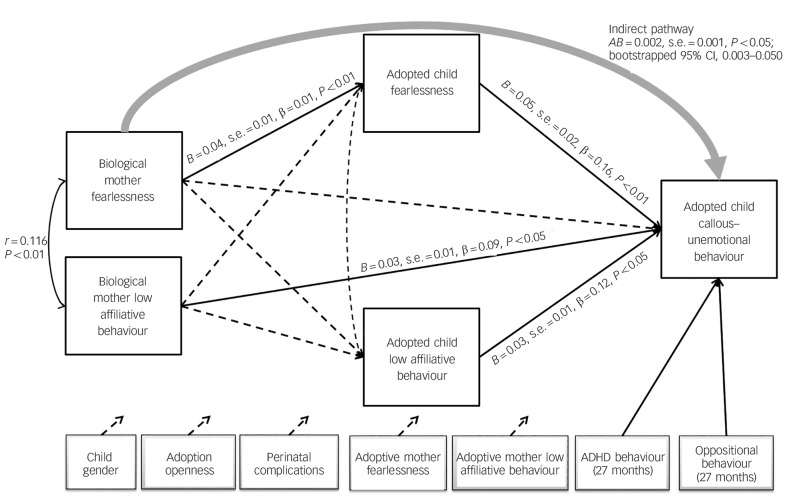Fig. 3.
Biological mother fearlessness predicts a heritable pathway to early callous–unemotional behaviour via observed child fearless temperament.
Model fit statistics: χ2 = 15.09, d.f. = 17, P>0.59, comparative fit index (CFI) = 1.00, root mean square error of approximation (RMSEA) = 0.00, standardised root mean square residual (SRMR) = 0.02. Callous–unemotional behaviours, R2 = 0.34. Dashed lines indicate non-significant paths. We tested the indirect pathway using two methods: a product coefficient test (‘Sobel test’) to quantify the magnitude of effects and unbiased confidence intervals using bootstrapping, which do not assume normality of the distribution of effects. Using maximum likelihood procedures, analyses included all participants (n = 561). The models controlled for the effects of the following covariates on the child callous–unemotional behaviours: child gender, adoption openness, perinatal complications, attention-deficit hyperactivity disorder (ADHD) and oppositional behaviours, and adoptive mother fearlessness and low affiliative behaviour. ADHD and oppositional behaviours were related to child callous–unemotional behaviours (Table DS1).

